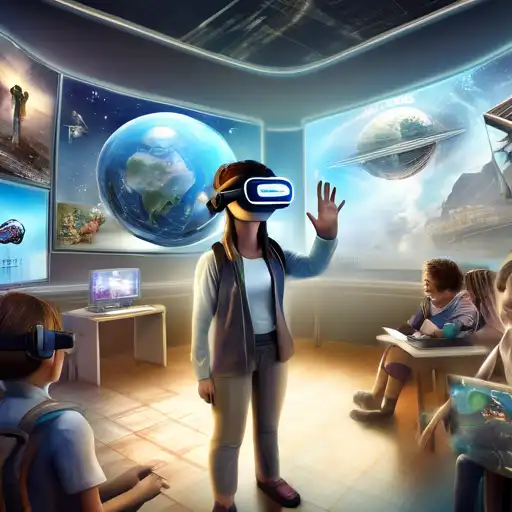Introduction to Virtual Reality in Education
Virtual Reality (VR) is rapidly transforming the educational landscape, offering immersive learning experiences that were once beyond imagination. This technology enables students to explore historical sites, dissect virtual frogs, or even walk on Mars, all from the safety of their classroom. The potential of VR in education is limitless, providing a dynamic and interactive way to engage students.
The Benefits of Virtual Reality in Learning
VR in education offers numerous benefits, including enhanced engagement, improved retention rates, and the ability to simulate real-world scenarios. Students can practice surgeries, explore the universe, or learn languages by immersing themselves in virtual environments. This hands-on approach caters to various learning styles, making education more inclusive.
Enhanced Engagement and Motivation
By leveraging VR, educators can capture students' attention like never before. The immersive nature of VR makes learning exciting and fun, significantly increasing motivation and participation rates.
Improved Retention Rates
Studies have shown that VR can improve retention rates by enabling experiential learning. When students learn by doing, they are more likely to remember the information.
Challenges and Considerations
Despite its benefits, integrating VR into education comes with challenges. The cost of VR equipment and the need for technical support can be prohibitive for some institutions. Additionally, there's a learning curve for both teachers and students to effectively use VR technology.
Overcoming Barriers
To overcome these challenges, schools can start small by incorporating VR in specific subjects or investing in affordable VR solutions. Professional development for teachers is also crucial to ensure they are comfortable using VR in their lessons.
Future of Virtual Reality in Education
The future of VR in education is bright, with advancements in technology making it more accessible and affordable. As VR becomes more integrated into curricula, it will continue to revolutionize how we teach and learn, making education more interactive, engaging, and effective.
For more insights on innovative learning technologies, check out our article on The Impact of Artificial Intelligence in Education.
Conclusion
Virtual Reality is setting the stage for a new era in education, offering unparalleled opportunities for immersive learning. While challenges exist, the potential benefits for student engagement and retention make VR a worthwhile investment for the future of education.
